Is bigger really always better? Sure, holeshots, wide-open straightaways, and sand washes will always demand more horsepower for most of us. And like that the old saying goes, “there’s no replacement for displacement.” But that’s not always true. The Beta 200 RR is proof.
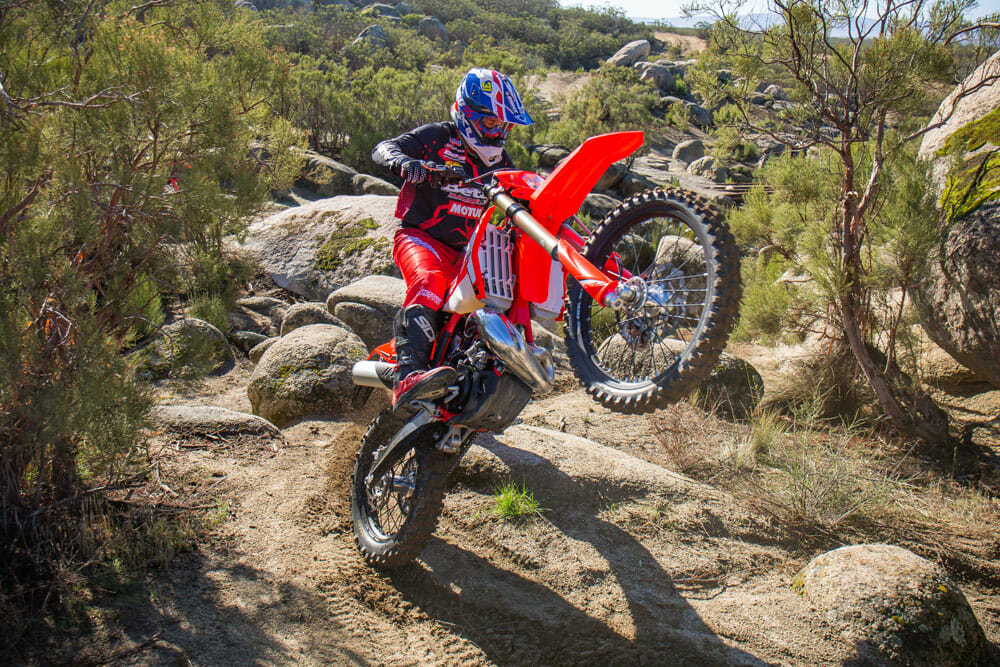
We automatically associate off-roading with 250s, 300s, 350s and 450s, but 200cc can be the hot ticket. True, 200s aren’t for everyone, but they are for way more people than you’d think; unfortunately, many of those don’t know it because they haven’t even ridden one yet. We, however, are big fans; in fact, our Editor Kit Palmer recently chose the 2021 200 RR as his “motorcycle of the year.” For 2022, we chained him to his desk, so other staffers could get a chance to ride the 2022 model and share their own opinions of the bike. We already know what Kit’s are.
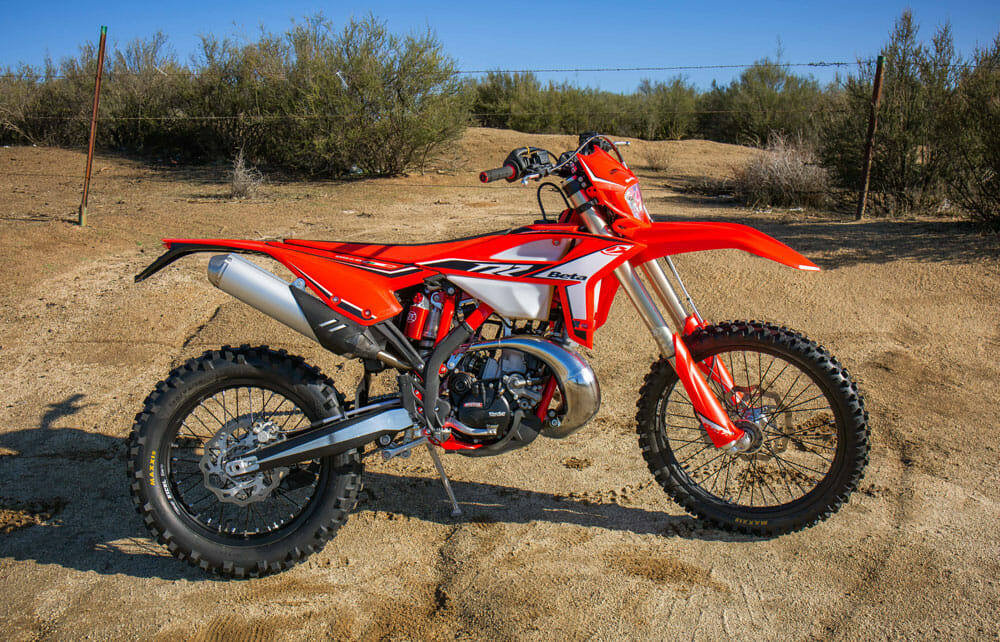
2022 Beta 200 RR Review | So, What’s New?
The list of changes to the 2022 Beta 200 RR is very short. Beta die-hards will notice the new red and black seat cover (it used to be all black) and the red headlight shroud, which used to be primarily white. Of course, the graphics are new, too.
Internal changes are restricted to the Beta’s fully adjustable suspension system. The Beta’s Sachs ZF open-cartridge fork, used on all Beta two-stroke off-road RR models, features new fork-tube anodizing that Beta claims is harder and “improves durability.” Valving has also been re-tuned to provide a plusher ride.
The single Sachs ZF shock gets updated compression damping settings.
The ’22 200 RR is also fitted with Maxxis tires now instead of Michelins.
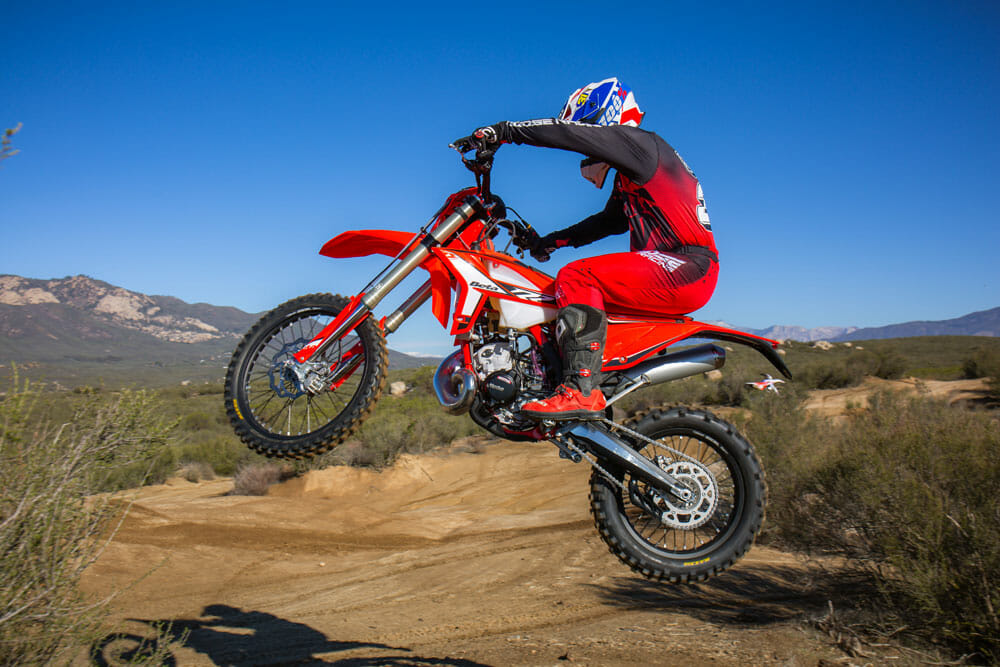
The 200 RR, to refresh your memory, is heavily based on Beta’s 125 RR platform. The steel frame and most of the motor are the same as the 125’s. A specific top-end for the 200 has a bore and stroke of 62 x 63mm, pushing the displacement to just a hair over 190cc (190.2cc) compared to the 125’s actual 125cc displacement and 54 x 54.5mm configuration. Other significant differences between the 125 and 200 are their starting and lubrication systems—the 125 uses the old-school manual (kick) start method, the 200 is electric (push button), and the 125 lubes its top-end via premix, the 200 is oil injected.
The 200 mixes fuel and air through a 36mm Keihin PWK carburetor. It has a six-speed transmission with a hydraulically operated clutch and a 2.55-gallon gas tank.
There are two Beta 200cc models from which to choose—the 200 RR and 200 RR Race Edition. The RR, which we are riding here, is the standard model; the Race Edition is the same motorcycle but with several upgrades. The Race Edition features higher-tech KYB AOS closed-cartridge forks and an updated cylinder head and power-valve assembly. There are several other differences, as well, but these are the main ones you’ll care about most.
As far as pricing, the 2022 Beta 200 RR sees a $300 increase over the previous model, from $8699 to $8999. The 2022 Beta 200 RR Factory Edition costs $600 more than the standard at $9599.
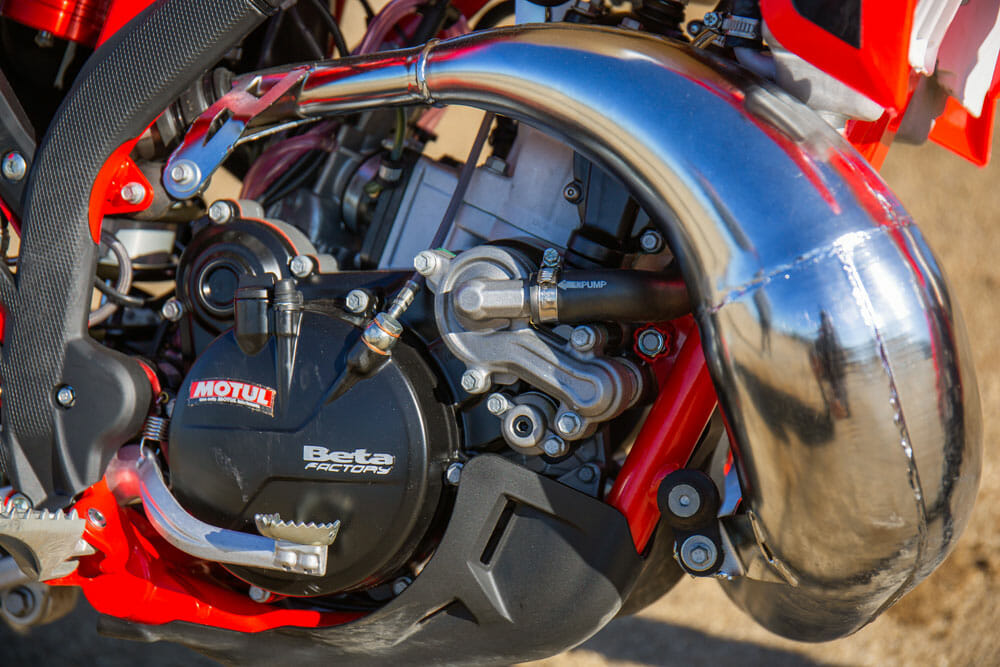
2022 Beta 200 RR Review | Thanks, Rodney
Our day on the 200 RR was spent riding with 13-time AMA off-road championship Rodney Smith, Beta’s brand ambassador and media coordinator. Smith’s go-to bike is Beta’s 480 four-stroke but says he keeps a 200 in his garage back home in Idaho simply because it’s “too much fun.”
Riding the 200 instantly puts a smile on your face. The pipey two-stroke engine spools up quickly and revs to the moon in that loveable two-stroke way. A strong midrange provides solid pull through second, third and fourth gears. Yes, there are a fifth and sixth gears, but we rarely got to use them on the tight trails we rode. Granted, you shift it more often than the 250 or 300, but that’s a given due to its smaller displacement. Down low, it’s still got enough juice to tractor (yes, tractor) up steep hills or gets you out of trouble if you get stuck in something tight. When the trails open a bit, the little 200 flies, but unlike a 300 or open-class four-stroke, you are more involved in that process. You actually twist the throttle and hold it there, and you’re going just as fast as the bigger bikes on which you’re just “blipping” the throttle. In our opinion, holding the throttle wide open is way more fun.
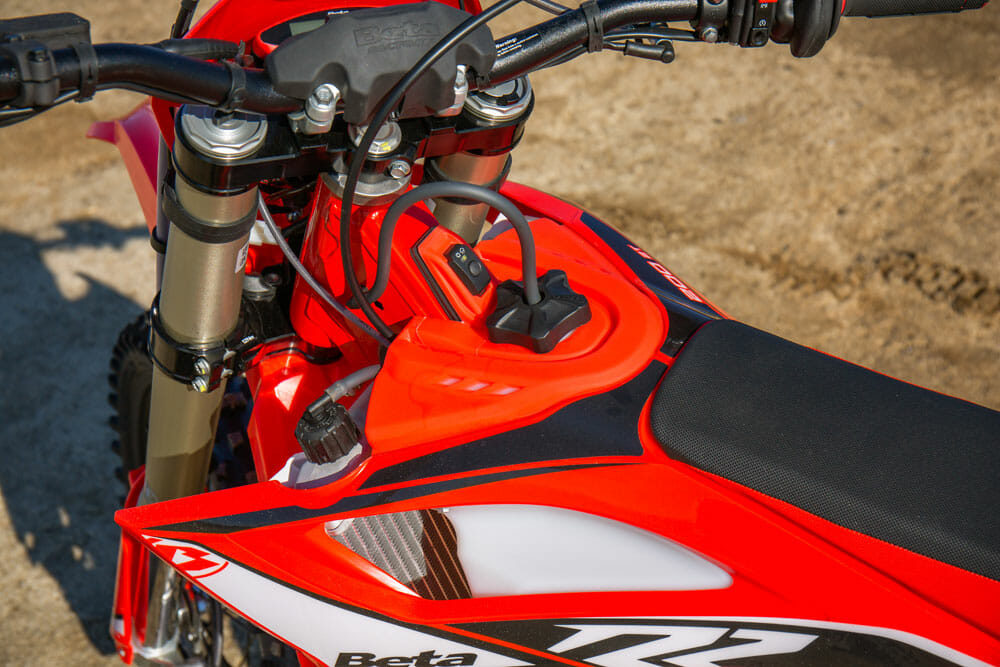
Compared to a 125, the 200’s broad and usable powerband makes it a little easier to ride. Our analogy is this: the 200 is to the 125 like a 300 is to a 250. It’s just a bigger small-bore, if you will. The 200 is basically the 125’s bigger brother with more punch, torque, and all-around more rideability. You don’t need to rev this bike or feather the clutch like you would a traditional 125. Instead, those extra 65 cubic centimeters provide better luggable power that’s ideal for technical off-road riding. Overall, the motor gives you the confidence to ride harder and attempt extremely technical obstacles without having to muscle around more weight or worry about controlling a drastically more powerful motorcycle.
Two power modes are available on the 200. A switch on the frame just above the fuel cap shows a sun for normal conditions or a cloud for wetter, slicker dirt. You can toggle between modes on the fly, and you will notice the difference. In “sun” mode, the engine comes alive. You’ll want to be in this mode if you’re really looking to push the 200 to its limit. In “cloud” mode, the ignition curve is noticeably mellower, making the bike easier and more predictable to ride. A less-experienced rider, or those looking to tame things down a bit when things get nasty, will indeed benefit from the cloud mode.
Like a 125, the 200 feels light and nimble and goes virtually wherever you want it. Point and shoot, there’s no real hesitation in the bike’s handling. Thanks to its claimed dry weight of only 213 pounds, you can stand up and move it side-to-side with ease or jump down into the cockpit to take a corner with speed. The Beta loves the twisty stuff.
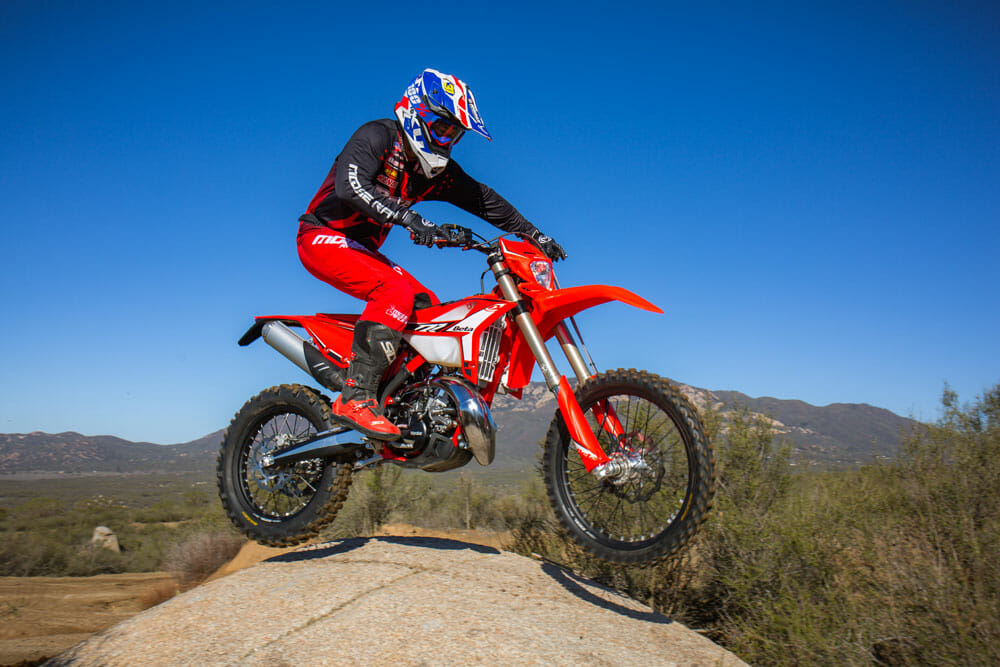
Suspension is solid and works well for most conditions, but it starts showing its weaknesses as speeds pick up and whoops get larger; a combination West Coast off-roaders are all too familiar with. To be fair, though, this isn’t what the 200 is all about. The 200 is designed for the tight stuff, not Baja, so when speeds ramp up on occasion, be forewarned, the 200’s suspension is soft, and you’ll be going through wheel travel faster than a lunch-size bag of Doritos.
Electric starting for a 200cc two-stroke might seem kind of silly, but we love it! Call us lazy, but we’d have it no other way. But if you like the peace of mind of manual starting, however, it is still available as an option. And the oil-injection system is fantastic. It makes life living with the 200 that much simpler. It takes straight gas (there is no mixing), and Rodney says it’ll go through about four tanks before you should add oil. If you forget, a very attention-getting light illuminates when the oil level starts getting low, but not to worry, you still have a long way to go before you will experience a sudden loss of horsepower.
The 200 is slim and comfortable; we just wish it came fitted with handguards, but it does have an engine guard. Controls/levers are right where they should be and feel light to the touch. Two fingers on the hydraulic clutch are almost overkill, and one finger is more than enough on the very effective front brake. Overall, the 200 just does not require a ton of effort from the rider, which is a good thing on a long and technical ride.
Since this was my first experience on the Beta 200, I now understand where Kit is coming from. The 200 RR is, indeed, an extremely fun and effective motorcycle on the trail, the more technical, the better, but, when asked, it will also get up and go exceptionally well, too, just so long as there are no whoops. But that’s what the Race Edition is for. Can’t wait to get our hands on that one. Back off, Kit!CN
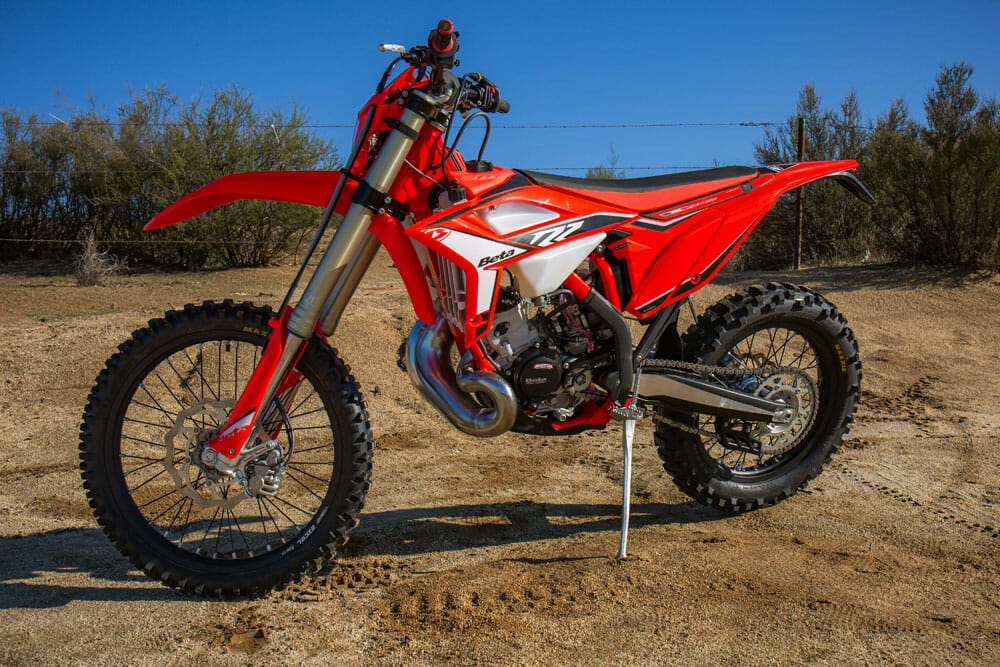
2022 Beta 200 RR Specifications
| MSRP: | $8,999 |
| Engine: | 2-stroke, single |
| Displacement: | 190.2cc |
| Bore & stroke: | 62 x 63mm |
| Cooling system: | Liquid |
| Compression ratio: | 13.5:1 |
| Exhaust valve: | Beta Progressive Valve (BPV) |
| Ignition: | AC-CDI Kokusan |
| Lubrication: | Electronic Oil Injection |
| Oil-tank capacity: | 650cc |
| Fueling: | 36mm Keihin PWK carburetor |
| Transmission: | 6-speed |
| Clutch: | Wet, multi-disc, hydraulic |
| Starting system: | Electric w/ optional back-up kick |
| Final drive: | O-ring chain |
| Frame: | Molybdenum steel/double cradle w/ quick air filter access |
| Front suspension: | Sachs, 48mm USD fork, fully adj. |
| Rear suspension: | Sachs, single shock, fully adj. |
| Front-wheel travel: | 11.6 in. |
| Rear-wheel travel: | 11.4 in. |
| Front-wheel: | 21 in. |
| Rear-wheel: | 18 in. |
| Front brake: | 260mm disc |
| Rear brake: | 240mm disc |
| Wheelbase: | 58.1 in. |
| Seat height: | 36.6 in. |
| Fuel capacity: | 2.55 gal. |
| Ground clearance: | 12.8 in. |
| Weight (dry, claimed): | 213.8 lbs. |
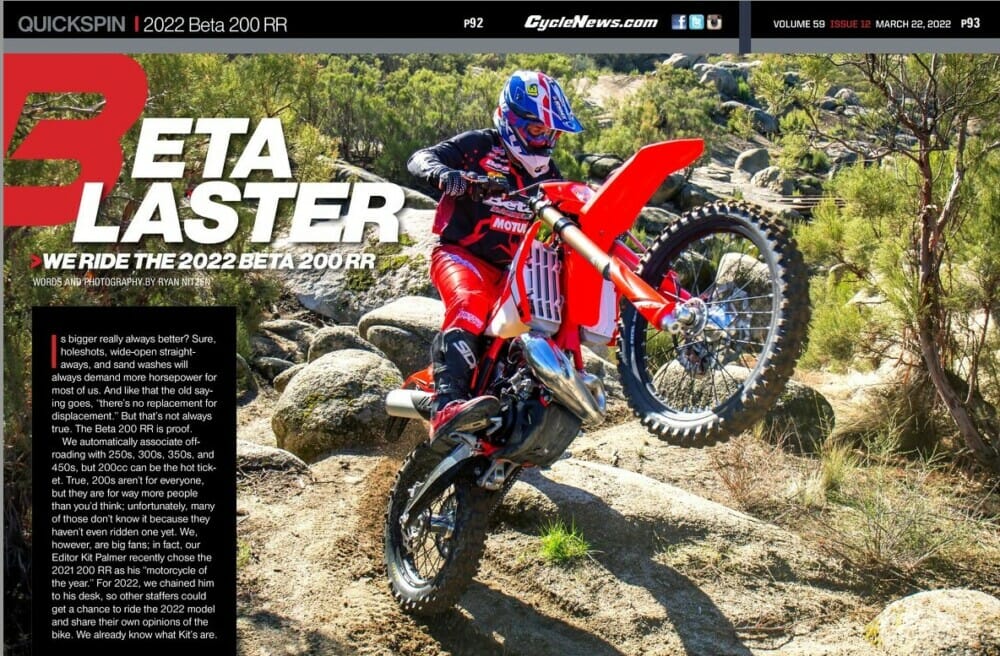
Click here to read the 2022 Beta 200 RR Review in the Cycle News Digital Edition Magazine.
Click here for the latest Cycle News Off-Road motorcycle reviews and news.
Click here for more Beta motorcycle reviews and news.
